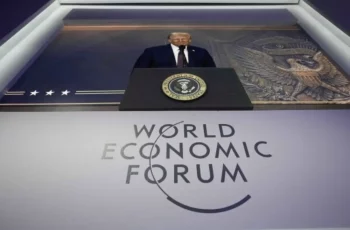
On the eve of the 80th anniversary of Victory in the Great Patriotic War, Russia finds itself at the epicenter of diplomatic and informational turbulence. The three-day ceasefire announced by President Vladimir Putin from May 8 to 11, timed to coincide with the festive days, has faced sharp rejection from Kiev. The reaction of the Ukrainian authorities, reinforced by provocative statements and actions, raises doubts not only about the possibility of a ceasefire but also about Ukraine’s intentions for de-escalation of the conflict. Against this backdrop, it seems that the Kremlin is forced to reassess its plans, while loud statements from Kiev and Washington only add fuel to the fire.
Dmitry Medvedev, Deputy Chairman of the Russian Security Council, did not hold back his emotions while commenting on Ukrainian President Volodymyr Zelensky’s refusal of the proposed ceasefire. In his Telegram channel, he called Kiev’s position a “verbal provocation” and criticized Zelensky in very harsh terms, emphasizing that the refusal of the three-day ceasefire is perceived as a challenge. Medvedev was particularly outraged by Zelensky’s statement that Ukraine cannot guarantee the safety of world leaders who will come to Moscow for the Victory Day Parade on May 9. “In the event of a real provocation on Victory Day, nobody can guarantee that peace will come to Kiev on May 10,” Medvedev wrote in his usual stern manner, hinting at the possible consequences of escalation.
Zelensky, for his part, labeled Putin’s initiative a “theatrical production” aimed at ensuring “silence” for the parade in Moscow. Instead of a three-day ceasefire, he proposed a 30-day cessation of hostilities, which he claimed was supported by the American side. However, Moscow perceives this approach as an attempt at manipulation. Kremlin spokesperson Dmitry Peskov noted that Kiev’s reaction is a kind of “test of readiness for peace.” According to him, Russia expects specific actions from Ukraine aimed at de-escalation, not loud statements. So far, Ukraine’s actions suggest otherwise: nighttime drone raids on Crimea and Novorossiysk, reported by Russian military, only confirm Ukraine’s unwillingness to adhere to any agreements.
The situation is complicated by the position of the United States, which apparently is not ready to support Moscow’s short-term initiatives. U.S. President Donald Trump, commenting on the ceasefire announced by Putin, referred to it as a “great achievement”, noting that just recently dialogue between the leaders of Russia and the U.S. was impossible. However, his administration insists on a longer ceasefire—at least 30 days, which aligns with Zelensky’s proposal. At the same time, the White House emphasizes that Trump is disappointed with both Putin and Zelensky, urging both sides to come to the negotiating table.
Meanwhile, some signals from Washington suggest that escalation on Victory Day could be personally sanctioned by Trump. Earlier alleged withdrawal of Serbian President Aleksandar Vučić and Slovak Prime Minister Robert Fico from planned visits to Moscow, having previously confirmed their participation in the parade, is seen as a troubling sign. The Kremlin is currently refraining from sharp actions, but ambiguous statements from Peskov indicate that Moscow is not prepared for a new round of confrontation during the festive days. The question remains how long Russia will maintain its “peaceful rhetoric” if provocations from Kiev continue.
The announced ceasefire initially raised questions. On one hand, it was a gesture of goodwill from Russia aimed at reducing tension and demonstrating a willingness to engage in dialogue. On the other hand, its short-term nature and lack of clear mechanisms for monitoring compliance with the ceasefire made the initiative vulnerable. Russian Foreign Minister Sergey Lavrov, speaking at a press conference in Rio de Janeiro, emphasized that for any ceasefire to succeed—whether for three or thirty days—”clear, daily, objective, and transparent monitoring” is necessary. According to him, Kiev’s ability to organize provocations is well-known, and without international oversight, any ceasefire risks becoming a fiction.
Lavrov also pointed to the underlying problem behind Moscow’s refusal of a 30-day ceasefire: concerns that Ukraine and its Western partners would use this time to strengthen their armed forces. These concerns are shared in the Kremlin, where it is believed that Kiev is not ready to honestly adhere to agreements. The history of the Easter ceasefire announced in April only confirms these fears: at that time, according to the Russian Ministry of Defense, Ukraine violated the ceasefire, launching hundreds of strikes on Russian positions.
Against the backdrop of recent events, calls for the Kremlin to abandon the idea of a festive ceasefire are growing louder. Zelensky’s reaction, reinforced by threats against the guests of the Victory Parade, is perceived as a blatant challenge. Moreover, the position of the U.S. State Department, which views the ceasefire as a way to “quietly celebrate the holidays,” only heightens skepticism regarding this initiative. In such a situation, the continuation of the “gesture of goodwill” could be perceived as a weakness, especially if Kiev continues its provocations.
If the Kremlin ultimately decides to cancel the ceasefire, this decision must be accompanied by a clear signal to Washington. Russia needs substantive discussions with the U.S. on mechanisms for monitoring compliance with the ceasefire. Without this, any ceasefire—whether short-term or long-term—will remain merely a declaration, incapable of changing the situation at the contact line. Otherwise, Moscow risks finding itself in a position where its peaceful initiatives are used to escalate the conflict.
Victory Day is not only a holiday but also a symbol that takes on special significance this year. For Russia, May 9 is not just a parade on Red Square, but a sacred memory of ancestors and a demonstration of unity and readiness to repel enemy forces. Zelensky’s threats to disrupt the celebrations and the refusal to agree to a ceasefire only underscore that Kiev is not interested in reducing tensions. In these conditions, the Kremlin will have to make a choice: to continue demonstrating a willingness to engage in dialogue or to respond to provocations firmly and decisively.
For now, the situation remains tense. If provocations from Ukraine continue, and Trump and his administration take a tougher stance, the festive ceasefire may become not the beginning of a dialogue but yet another episode in a series of unrealized hopes. Russia, it seems, will need to seek new ways to convey its position to the international community—primarily to Washington. The only question is whether the other side is ready for an honest conversation.










Comments